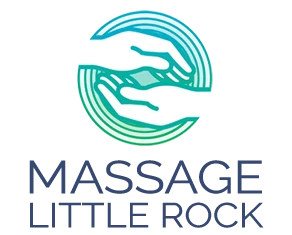Swedish Massage Origins and History in *Little Rock AR

Swedish massage often hailed as the quintessential relaxation technique, boasts a rich history intertwined with the healing arts. Originating in the 19th century, it was developed by Per Henrik Ling a Swedish physiologist as a form of medical gymnastics. However, it was Johan Georg Mezger, a Dutch practitioner, who popularized and standardized the strokes we recognize today as Swedish massage in Little Rock AR.
Swedish Massage And Your Wellness Routine within Little Rock AR
This technique blends various movements such as effleurage, petrissage, friction, tapotement, and vibration to induce relaxation, alleviate tension, and improve circulation. Its widespread adoption across the globe speaks volumes about its efficacy and appeal.
The strokes used in Swedish massage aim to target superficial muscles and promote relaxation. Effleurage involves long, gliding strokes to warm up the muscles, while petrissage involves kneading and rolling motions to release tension. Friction focuses on deeper knots, tapotement employs rhythmic tapping, and vibration adds a gentle oscillation.
Swedish massage has transcended its medical origins to become synonymous with luxury and self-care. Its ability to soothe both body and mind has made it a staple in spas and wellness centers worldwide, offering respite from the stresses of modern life.
Swedish Massage Techniques Used in Little Rock AR
Swedish massage employs a variety of techniques aimed at promoting relaxation, easing tension, and improving overall well-being. Among the most commonly used techniques are:
- Effleurage - Long, sweeping strokes that glide along the surface of the skin, promoting relaxation and improving circulation.
- Petrissage - Kneading and squeezing motions that target deeper layers of muscle tissue, helping to release knots and tension.
- Friction - Circular movements that apply pressure to specific points, helping to break down adhesions and alleviate pain.
- Tapotement - Rhythmic tapping or percussive movements that stimulate the muscles and invigorate the body.
- Vibration - Fine, rapid movements that create a gentle shaking or trembling sensation, promoting relaxation and releasing tension.
By combining these techniques in varying sequences and intensities, massage therapists can tailor Swedish massage sessions to meet the unique needs and preferences of each client.
Benefits of Swedish Massage
Swedish massage boasts a range of benefits that cater to both physical and mental well-being. Firstly, it effectively alleviates muscle tension by targeting superficial muscles, inducing a profound sense of relaxation and ease. Additionally, the gentle, rhythmic strokes characteristic of Swedish massage enhance blood circulation, ensuring the delivery of vital oxygen and nutrients to the body's tissues for optimal functioning. Moreover, through the release of endorphins, this therapeutic technique promotes deep relaxation, alleviating stress and anxiety. Regular sessions of Swedish massage can also contribute to improved flexibility and range of motion by loosening tight muscles and joints, enhancing mobility and comfort. Furthermore, by stimulating the lymphatic system, Swedish massage aids in toxin removal from the body, thereby supporting immune function and overall well-being.
What to Expect During a Swedish Massage Session
During a Swedish massage session, clients can expect to lie on a massage table draped with towels or sheets for modesty and comfort. The massage therapist will typically use massage oil or lotion to facilitate smooth, gliding strokes and may incorporate techniques such as effleurage, petrissage, friction, tapotement, and vibration.
Clients are encouraged to communicate their preferences regarding pressure, areas of focus, and any discomfort or pain they may be experiencing. The therapist will adjust their technique accordingly to ensure a comfortable and effective session.
Swedish massage is known for its gentle and relaxing nature, making it suitable for individuals of all ages and fitness levels. After the session, clients may experience feelings of deep relaxation, improved mood, and decreased muscle tension.
Differences Between Swedish Massage and Other Massage Techniques
Swedish massage boasts a range of benefits that cater to both physical and mental well-being. Firstly, it effectively alleviates muscle tension by targeting superficial muscles, inducing a profound sense of relaxation and ease. Additionally, the gentle, rhythmic strokes characteristic of Swedish massage enhance blood circulation, ensuring the delivery of vital oxygen and nutrients to the body's tissues for optimal functioning. Moreover, through the release of endorphins, this therapeutic technique promotes deep relaxation, alleviating stress and anxiety. Regular sessions of Swedish massage can also contribute to improved flexibility and range of motion by loosening tight muscles and joints, enhancing mobility and comfort. Furthermore, by stimulating the lymphatic system, Swedish massage aids in toxin removal from the body, thereby supporting immune function and overall well-being.
Commonly Asked Questions About Swedish Massage
Q: Is Swedish massage painful?
A: No, Swedish massage typically uses lighter pressure compared to deep tissue massage, focusing on relaxation rather than targeting deep knots or adhesions.
Q: How often should I get a Swedish massage?
A: The frequency of Swedish massage sessions depends on individual needs and preferences. Some people may benefit from weekly sessions, while others may prefer monthly or occasional treatments.
Q: Can Swedish massage help with anxiety and stress?
A: Yes, Swedish massage has been shown to promote relaxation, reduce anxiety, and alleviate stress by stimulating the release of endorphins and promoting a sense of well-being.
Q: What should I wear during a Swedish massage session?
A: Clients are typically asked to undress to their comfort level and lie on a massage table draped with towels or sheets for modesty and comfort.
Q: How long does a Swedish massage session last?
A: Swedish massage sessions typically last between 60 to 90 minutes, although shorter or longer sessions may be available depending on the therapist and spa policies.
Q: Are there any contraindications for Swedish massage?
A: While Swedish massage is generally safe for most people, individuals with certain medical conditions or injuries may need to consult with their healthcare provider before receiving massage therapy.
Q: What are the benefits of using massage oil or lotion during a Swedish massage?
A: Massage oil or lotion helps to reduce friction between the therapist's hands and the client's skin, allowing for smoother, more fluid strokes and enhancing the overall massage experience.
Q: Can I request specific areas to focus on during a Swedish massage?
A: Yes, clients are encouraged to communicate their preferences regarding pressure, areas of focus, and any discomfort or pain they may be experiencing, allowing the therapist to tailor the session to meet their individual needs.
The Enduring Legacy of Swedish Massage
Swedish massage, originating in the 19th century, offers a blend of gentle strokes and techniques aimed at promoting relaxation, easing muscle tension, and improving circulation. Its versatility and effectiveness have made it a popular choice for individuals seeking relief from stress and tension. From its origins in medical gymnastics to its modern-day status as a staple of spa treatments, Swedish massage continues to provide a soothing and rejuvenating experience for clients worldwide.
At Massage Little Rock our team is here to help answer your questions. Please feel free to contact us today.
OFFICE HOURS
Monday
8:45am - 6:00pm
Tuesday
8:45am - 6:00pm
Wednesday
8:45am - 6:00pm
Thursday
8:45am - 6:00pm
Friday & Saturday
Open Every Other Week
Sunday
10:00am - 2:00pm
Every Other Week
*Call the office for Availability
*When we are not open on Saturday, will will be open on Sunday.
We Always have Weekend Availability (either a Saturday or Sunday) except for Holiday weekends.
Massage Little Rock
615 Beechwood St STE B
Little Rock, AR 72205



